Related Research Articles

Margrethe II is a member of the Danish royal family who reigned as Queen of Denmark from 14 January 1972 until her abdication on 14 January 2024. Having reigned for exactly 52 years, she was the second-longest reigning Danish monarch after Christian IV. She is also the world's most recent female reigning monarch.
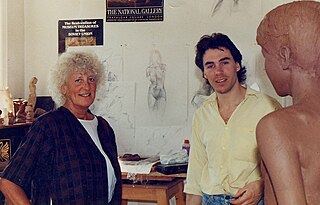
Dame Elisabeth Jean Frink was an English sculptor and printmaker. Her Times obituary noted the three essential themes in her work as "the nature of Man; the 'horseness' of horses; and the divine in human form".
Princess Elisabeth of Denmark, was a member of the Danish royal family. She was the only daughter and eldest child of Hereditary Prince Knud and Hereditary Princess Caroline-Mathilde of Denmark, and a first cousin of the previous Danish monarch, Queen Margrethe II.
Gillian Lowndes was an English ceramics sculptor.
Judy Pfaff is an American artist known mainly for installation art and sculptures, though she also produces paintings and prints. Pfaff has received numerous awards for her work, including a John D. and Catherine T. MacArthur Foundation Fellowship in 2004 and grants from the John Simon Guggenheim Memorial Foundation (1983) and the National Endowment for the Arts. Major exhibitions of her work have been held at the University of Wisconsin–Madison, the Denver Art Museum and Saint Louis Art Museum. In 2013 she was elected to the American Academy of Arts and Sciences. Video interviews can be found on Art 21, Miles McEnery Gallery, MoMa, Mount Holyoke College Art Museum and other sources.

Dr. Hinrich Johannes Rink was a Danish geologist, one of the pioneers of glaciology, and the first accurate describer of the inland ice of Greenland. Rink, who first came to Greenland in 1848, spent 16 winters and 22 summers in the Arctic region, and became notable for Greenland's development. Becoming a Greenlandic scholar and administrator, he served as Royal Inspector of South Greenland and went on to become Director of the Royal Greenland Trading Department. With "Forstanderskaber", Rink introduced the first steps towards Greelandic home rule.
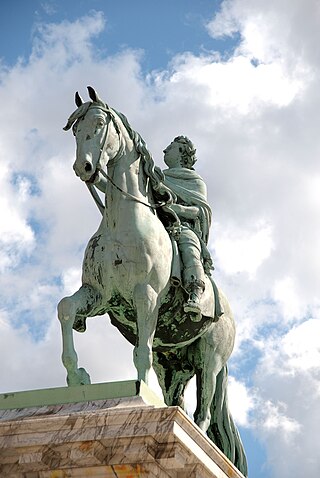
Danish sculpture as a nationally recognized art form can be traced back to 1752 when Jacques Saly was commissioned to execute a statue of King Frederick V of Denmark on horseback. While Bertel Thorvaldsen was undoubtedly the country's most prominent contributor, many other players have produced fine work, especially in the areas of Neoclassicism, Realism, and in Historicism, the latter resulting from growing consciousness of a national identity. More recently, Danish sculpture has been inspired by European trends, especially those from Paris, including Surrealism and Modernism.
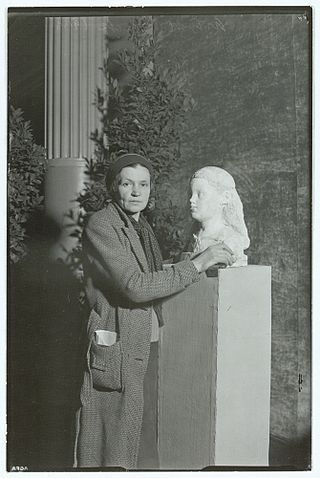
Astrid Noack was a Danish sculptor who specialized in the human figure, creating works such as the statue of Anna Ancher in Skagen, and her Standing Woman which was included in the Danish Culture Canon.
Lila Katzen, born Lila Pell, was an American sculptor of fluid, large-scale metal abstractions.
Eva Isabel Koch is a Danish sculptor who has gained fame with her video installations. In 2011, she was awarded the Thorvaldsen Medal.
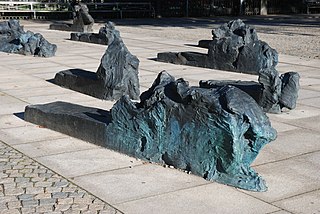
Kirsten Møller Ortwed is a Danish artist, now based in Cologne, Germany. She is noted for her striking sculptures in public spaces and her sometimes surprising combinations of traditional and unconventional materials.
Stig Brøgger was a Danish artist who worked with sculpture, painting, installations and photography. His aims have been to show how art contributes to man's experience of life and his understanding of the surrounding world.
Berit Heggenhougen-Jensen is a Danish artist who played a central role in the Danish Wild Youth artistic trend in the 1980s. She gained recognition from her participation in the 1982 exhibition Kniven på hovedet held at Tranegården in Gentofte.

Nina Sten-Knudsen is a Danish painter who played a central role in the Danish Wild Youth trend in the 1980s. She gained recognition from her participation in the 1982 exhibition Kniven på hovedet held at Tranegården in Gentofte. More recently, her large landscapes raise existential questions of past and present, the merits of the modern world and the meaning of painting.

Elisabeth Johansen was a Greenlandic midwife and politician. She was the first certified midwife in the country, as well as the first woman to attain a political office in Greenland. She was the first women appointed Knight of the Order of the Dannebrog.

The Women's Exhibition from the Past and Present held in Copenhagen in 1895 was an art and culture exhibition for women from the Nordic countries. Inspired by the 1893 World's Fair in Chicago, it was designed to demonstrate how far Nordic women had advanced in the areas of education, employment and art. The first of its kind in Europe, it was considered a great success.
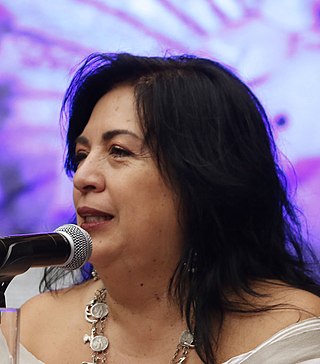
Betsabeé Romero is a Mexican visual artist. Her works include sculptures, installations, printmaking, perforated paper, photographs, and videos. She has exhibited widely, and has been featured in more than forty one-person exhibitions in the Americas, Africa, Asia and Europe.
Olga Rosalie Aloisa Wagner née Packness (1873–1963) was a Danish painter and sculptor. After specializing in painting at the Royal Danish Academy of Fine Arts, she was trained as a sculptor by her husband Siegfried. She worked together with him throughout her life, developing her own style. She is remembered for her large stone and bronze figures but also created smaller works in porcelain while working with Bing & Grøndahl and the Royal Danish Porcelain Factory.
Liv Blåvarp is a Norwegian artisan who is known for her jewellery, especially her beautifully sculptured, spirally-shaped necklaces and bracelets consisting of small pieces of wood. Since the mid-1990s, Blåvarp has gained international recognition for her creations and is now represented in the leading art museums of Scandinavia and North America. She has received a series of awards, including Norway's Jacob Prize in 1997, the Bavarian State Award from Munich's international crafts exhibition in 2012 and Sweden's Prince Eugen Medal in 2003.
References
- 1 2 3 "Elisabeth Toubro". Den Store Danske (in Danish). Retrieved 12 October 2014.
- 1 2 3 4 Mai Misfeldt. "Elisabeth Toubro (1956 - )" (in Danish). Dansk kvincebiografisk leksikon. Retrieved 12 October 2014.
- ↑ Torben Weirup. "Elisabeth Toubro" (in Danish). Kunstindeksdanmark & Weilbachs Kunstnerleksikon. Retrieved 13 October 2014.
- ↑ "Byfraktal" (in Danish). Elisabethtoubro.dk. Retrieved 13 October 2014.